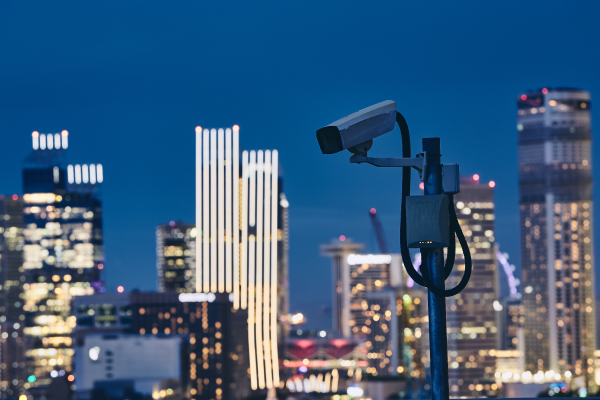Streamline Surveillance & Employee Management with AI-based Mobile Solutions
by Rajesh Shashikant Renukdas, on Feb 17, 2021 12:08:23 PM
Human resources and consumers are critical assets of a company across every vertical, and efficiently managing them may have a direct impact on organizational productivity. Tasks like monitoring staff leave requests and attendance, manual tracking of surveillance systems of stores, lanes, are intensively coupled with organization-wide resources and hence, add substantial slack in the system in the form of extra man-hours logged, time invested, reduced revenue per person, cross-process dependencies on labor and even fraudulent activities arising due to these loopholes. For clarity, an instance of shoplifting might evade live monitoring and will only be revealed when the surveillance videos are viewed.

Moreover, traditional technological solutions lack a unified interface which might give rise to consistent switching between applications deployed in silos. In this blog, we will have a look at how artificial intelligence and machine learning-based mobile solutions can help organizations reduce significant trade-off costs arising due to the absence of streamlined surveillance monitoring and automated tracking of staff attendance.
Let us begin by understanding the basics of AI/ML-based video surveillance and attendance systems :
How does AI/ML-based surveillance work on a mobile solution?
Artificial intelligence-based mobile solutions for surveillance uses a software program that looks at the media files from surveillance cameras to identify humans, objects, vehicles or events. The A.I. program functions by using machine vision. The vision works on a series of rules set by developers and a repository of stored reference images of humans, objects, their postures, color, speed, angles, positions, etc. The A.I. asks itself if the observed object or human activity is unusual or is analogous with a pre-existing set of activities. An alert is then sent accordingly through mobile to the respective authority.
These algorithms can also help identify non-human objects responsible for hacks on websites. Besides the minimal rules for objects or entities, complex rules can also be set. For example, to monitor social distancing norms, these AI systems can help detect highly saturated areas with people and alert the authorities. The software that houses the program can be set up in a mobile app that receives the input from the cameras.
Use cases of AI/ML-based custom surveillance and attendance app
Employee management
- Real-time monitoring of employees presence on systems
- Automated attendance using face recognition
- Preventing time theft or buddy punching
Store management
- Identifying and getting alerts on store thefts like shoplifting
- Getting automated alerts for products sold out on an aisle in a convenience store
- Identifying the number of consumers in-store to identify patterns of high and low business activity
- Maintaining social distancing norms in the stores
- Check-out free stores with automated surveillance based billing system
Government initiatives
- Monitoring “Smart” glasses equipped with facial recognition software to scan faces and match them to persons of interest
- Management of Robotic birds or drones for covert civilian surveillance
- Video systems using facial recognition to look for criminals
- Monitoring prison inmates with surveillance and robotic wristbands
- Identifying disasters/accidents and alerting respective authorities
Schools and Institutions
- AI based uniforms with chips to identify students, alerting stakeholders about the students’ location
- Apps with NLP to get alerts about acts like bullying, or self harm by identifying spoken or written words.
- Facial recognition for attendance and identifying intruders
Hospitals and healthcare institutions
- Automating registration of incoming emergency cases through facial recognition
- Alerting authorities in case of an anomaly in medical instruments
- Video surveillance during surgeries to identify best practices
- Home monitoring of patients to detect a fall, and identify other precautionary instances
- Analyze facial expressions, body posture, etc. of mental patients to identify patient mood, pain intensities through micro-expressions etc.
Fundamental Features of The App
- Customized dashboards
A custom app solution for an AI based system can be composed of a dashboard with the primary information in the form of visuals or stats that a stakeholder or a business requires. For instance, for brand surveillance, a brand app can have separate dashboards for inventory managers to monitor raw materials, for store managers to oversee shoplifting, access information on staff time off and logged in hours.
- Notification System
A notification system will be essential for instigating appropriate in-time response to an event or a mishap.
- Facial/object recognition
This becomes one of the primary features of your app that helps validate the biometrics of a person/object with a database of authorised people.
- Reporting Module
This module will account for automatic generation of attendance/material/customer data reports in the format of your choice like CSV or Excel, among others.
Conclusion
Artificial intelligence technology possesses far more superior and error-free capabilities than humans to monitor multiple cameras simultaneously, spotting and identifying a trespassing entity or object, recognizing people from a database etc. Mobile solutions make it much more accessible and implementable in areas that are deemed expensive and complex.
Moreover, with a customized set of requirements that cater to your exact processes, there is no dearth of cost-savings that can be attained through automating tasks and freeing up resources for other profitable business areas. To proceed, get in touch with a reputable AI in security and surveillance services company.

















